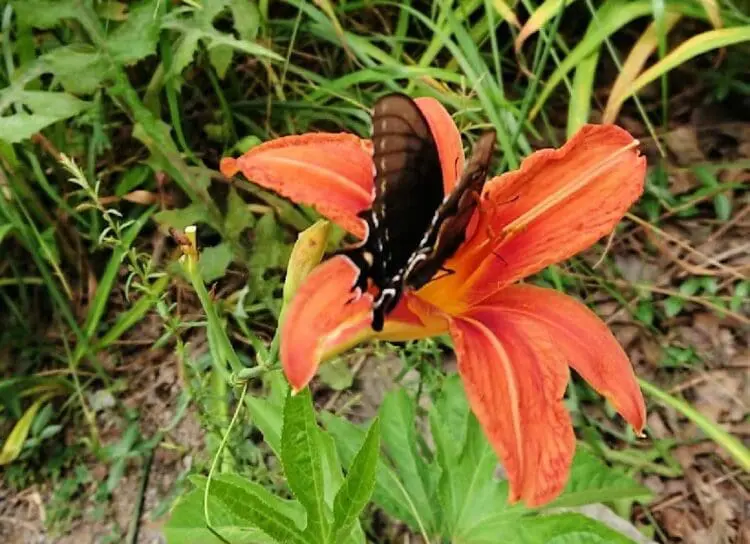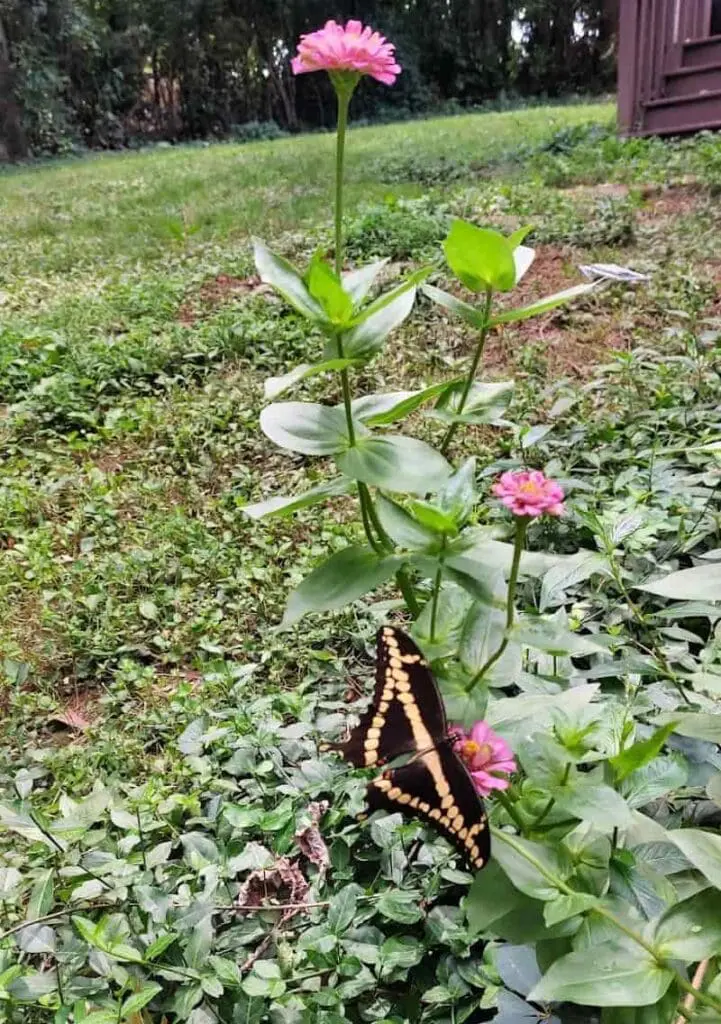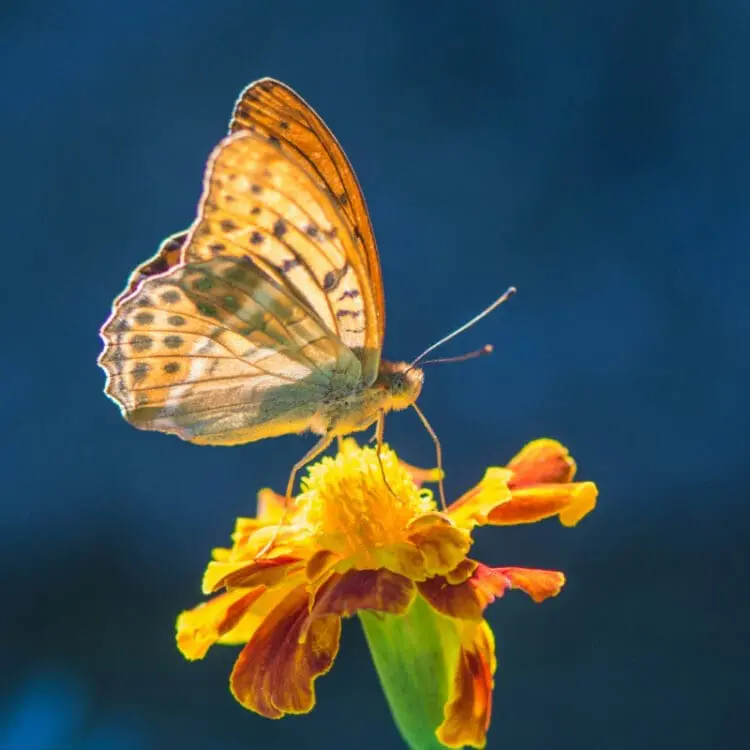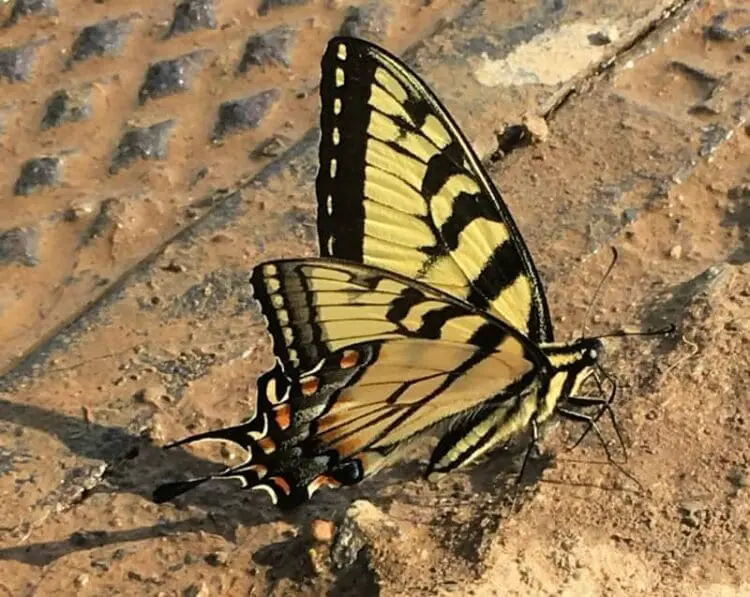Imagine a scene straight out of a fairy tale: a garden abuzz with the delicate flutter of colorful butterflies dancing amongst vibrant flowers. With the right selection of plants, you can turn this dream into a reality right in your own backyard. In this article, we will explore the secrets to creating a butterfly haven in your garden, from attracting these beautiful creatures with nectar-rich flowers to providing a home for them with host plants. By following our tips and recommendations for plants that attract butterflies, you can transform your outdoor space into a paradise for butterflies. It is so much fun to enjoy the enchanting beauty these winged-creatures bring to the garden.

Pollinators love daylilies.
Secrets Revealed: How To Attract Butterflies
Attracting butterflies to your garden or outdoor space can be beneficial for several reasons. Butterflies are important pollinators. By attracting them to your garden, you can help pollinate flowers, fruits, and vegetables, which is essential for plant reproduction and the production of fruits and seeds. In addition, many butterfly species are facing threats due to habitat loss and other factors. By creating a butterfly-friendly environment, you can contribute to their conservation and help protect these species for future generations.
Another bonus of attracting butterflies, is the educational opportunities, especially for children. Watching them first hand is a great way to learn about the life cycle of butterflies, their behavior, and their importance in nature. And perhaps the most obvious benefit of a butterfly garden is that butterflies are beautiful and colorful creatures. Watching them flutter around eating and drinking can be a peaceful and enjoyable experience. Here’s how to attract butterflies so you can enjoy their beauty yourself.

Nectar-Rich Flowers: The Key to Attracting Butterflies
Flower gardens are a beautiful way to dress up your yard. It is important to note that certain types of plants attract butterflies more than others. In addition, certain plants attract certain butterflies. Here is a list of 5 beautiful nectar producing plants to grow in order to attract butterflies to your yard. You may want to grow several of these “butterfly plants” so that you may attract several butterfly species. Mixing various types of plants also helps to ensure a longer blooming season which will in turn mean a longer season to observe the butterflies. There are many more than 5 plants that attract butterflies. However, I have just listed common choices that produce abundant nectar and are easy to grow.
- Butterfly Weed. Here in Tennessee, Butterfly Weed grows wild and you can commonly spot it on the side of the road. It blooms in beautiful clusters of bright orange flowers. It is a perennial so you don’t have to worry about replanting it each year. It reaches a height of up to 2 feet. Tiger swallowtail butterflies are just one of the species that are attracted by Butterfly Weed.
- Butterfly Bush. Butterfly Bush is a shrub and it grows to about 6 feet tall in colder regions where it dies back but it can grow up to 12 feet tall in warmer regions where it is an evergreen shrub. The Butterfly Bush has beautiful purple rod flowers and emits a lovely scent that you can enjoy as it attract butterflies. It seems to me that almost all flowers are attracted to the Butterfly Bush but one species in particular is the Red Admiral butterfly.
- Common Milkweed. True it’s name, Milkweed grows as a weed in Tennessee. It grows up to six feet tall and has pinkish flower clusters. It is a very important butterfly plant as it is the main source of food for Monarch butterflies.
- Marigold. These annual flowers are easy to grow and they don’t take up too much room. They also make great vegetable garden companion plants as they repel aphids and other garden pests as well as mosquitos. Marigolds attract Painted Lady butterflies among other types.
- Zinnas. Zinnias produce brightly colored flowers that butterflies find irresistible. One type of butterfly it attracts is the White Striped Longtail Skipper butterfly.
Planting a variety of these nectar plants can help attract a diverse range of butterfly species to your garden.

Host Plants: Providing a Home for Butterflies
To complement the nectar-rich flowers that will attract butterflies to your garden, it is equally important to provide host plants that serve as a nurturing environment for these magnificent creatures to lay their eggs and complete their life cycle. These are the plants on which adult butterflies lay their eggs, and their caterpillars feed and grow. By including a variety of host plants in your garden, you can attract and support a wide range of butterfly species, ensuring a thriving ecosystem in your outdoor space. Here are 5 examples of butterfly host plants.
- Black Swallowtail Butterfly: Plants in the carrot family (Apiaceae) such as dill, fennel, parsley, and Queen Anne’s lace are host plants for black swallowtail caterpillars.
- Eastern Tiger Swallowtail Butterfly: Trees like tulip tree (Liriodendron tulipifera), sweetbay magnolia (Magnolia virginiana), and wild black cherry (Prunus serotina) are host plants for these butterflies.
- Gulf Fritillary Butterfly: Passionflower vines (Passiflora species) are host plants for Gulf fritillary caterpillars.
- Painted Lady Butterfly: Thistles (Cirsium species) are one of the host plants for painted lady caterpillars.
- Monarch Butterfly: Did you know Monarchs are endangered? You can help and become a National Wildlife Federation Butterfly Hero. Milkweed (Asclepias species) is the primary host plant for monarch caterpillars. It’s essential for their survival as it provides the necessary nutrients and chemicals that make the caterpillars and adult butterflies unpalatable to predators.

Creating a Butterfly-Friendly Habitat
By including a variety of host plants in your garden, you can attract and support a wide range of butterfly species, ensuring a thriving ecosystem in your outdoor space. Creating a Butterfly-Friendly Habitat involves more than just selecting nectar-rich flowers. By incorporating a mix of host plants which serve as food sources, you can offer a welcoming environment for butterflies to complete their life cycle, from eggs to caterpillars to beautiful winged creatures. This diverse habitat will not only attract butterflies but also help them thrive, providing a sustainable ecosystem in your garden.
In addition to the variety of plants to attract butterflies and sustain them, there are a few more key elements of a butterfly garden. Butterflies need sheltered areas to rest and hide from predators. This can include tall grasses, shrubs, and trees. Butterflies also need water for drinking. A shallow dish with water and some stones for perching can provide a suitable water source for butterflies. Follow this link to see a cute DIY Butterfly watering station or Butterfly Puddler as they are also called. Furthermore, butterflies are cold-blooded and rely on the sun to warm their bodies. Therefore a sunny location for your butterfly garden is ideal. As it turns out, the majority of flowers with bright colors also enjoy full sun.

Maintenance Tips for a Thriving Butterfly Garden
To ensure your butterfly garden continues to flourish, it’s essential to maintain the right conditions for these winged visitors. Regular monitoring of your plants for signs of pests or disease is crucial to protect both the host plants and the butterflies that rely on them. Pruning, weeding, and watering are also important tasks to keep your garden healthy and vibrant.
Properly managing your garden space by removing any invasive species or plants that may compete with your butterfly-friendly plants will help create an ideal environment for these delicate creatures. Remember to avoid using harmful pesticides that can harm butterflies and other beneficial insects in your garden. Instead, opt for natural pest control methods or companion planting to keep your garden pest-free without harming the butterfly population. With a little effort and care, your butterfly garden will thrive, providing a haven for these enchanting creatures to visit and flourish.

Conclusion
As the above proverb reminds us, we can be made into something entirely new and beautiful. Butterflies represent growth and transformation often through a period of dormancy and/or struggle. Creating a Butterfly-Friendly Habitat involves more than just selecting nectar-rich flowers. By incorporating a mix of host plants, you can offer a welcoming environment for butterflies to complete their life cycle, from eggs to caterpillars to beautiful winged creatures. Furthermore, it is essential to avoid the use of pesticides in your yard that can harm butterflies.
By following the tips outlined in this article, you can provide a welcoming environment for these beautiful creatures to thrive. So take action today and transform your outdoor space into a paradise for butterflies. Remember, with a little effort and the right plants, you can bring beauty and magic to your garden while helping to support the butterfly population. Happy gardening!
I hope you have enjoy your new plants that attract butterflies. I’d love to hear about which plants you have in your butterfly garden! Share your photos of the wide variety of butterflies that visit on social media @familyfocusblog!
Related Posts:
Tree Leaf Identification Project For Kids

Genevieve says
Black-eyed Susan (Rudbeckia) is a native plant that produces bright yellow flowers that butterflies love. Another or my favorites are Phlox which produce large clusters of fragrant flowers that are very attractive to butterflies. I also love Asters which bloom in late summer and fall, providing important nectar for butterflies preparing for migration.
Shelly says
Great advice and plants suggestions for attracting butterflies to the yard. Lantana another is a colorful and fragrant plant that is very attractive to butterflies.
Repeater says
This is a lovely guide to creating a butterfly garden! I love how the article highlights the importance of butterflies as pollinators, not just beautiful additions to our gardens. Planting a butterfly garden is a great way to give back to nature and create a beautiful space to enjoy.